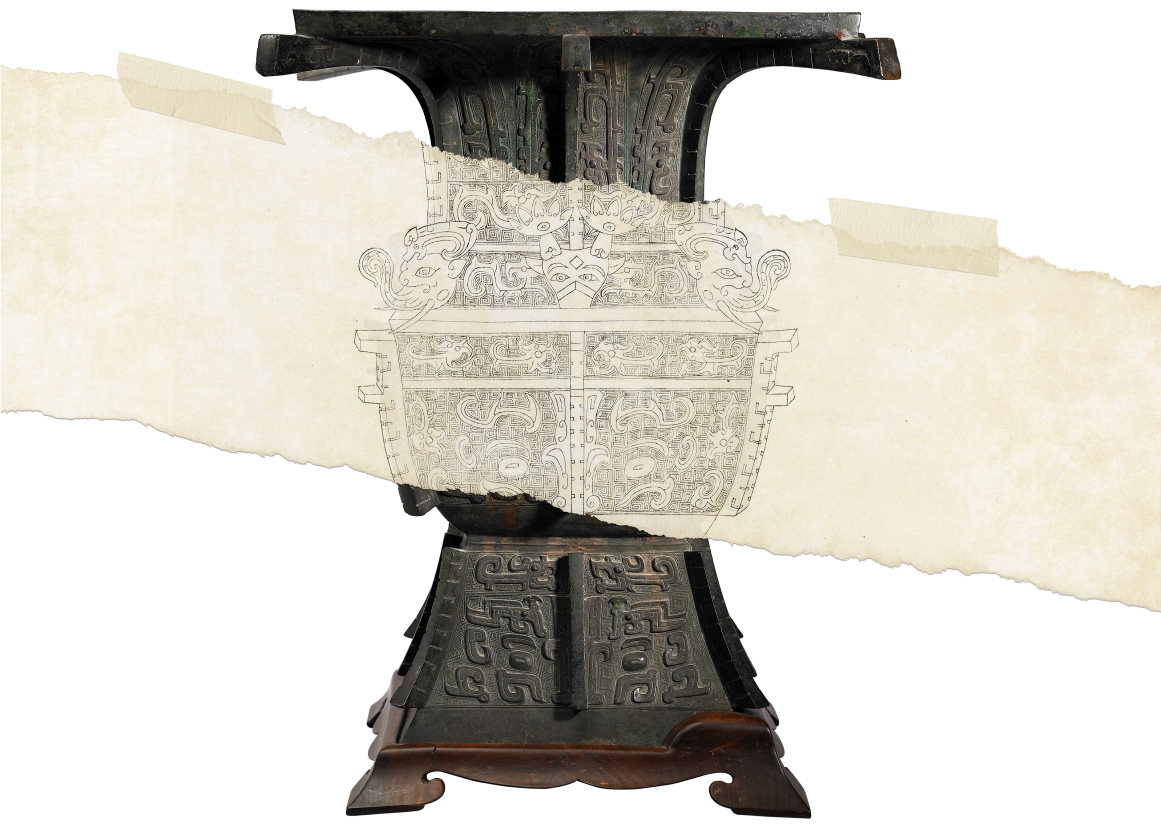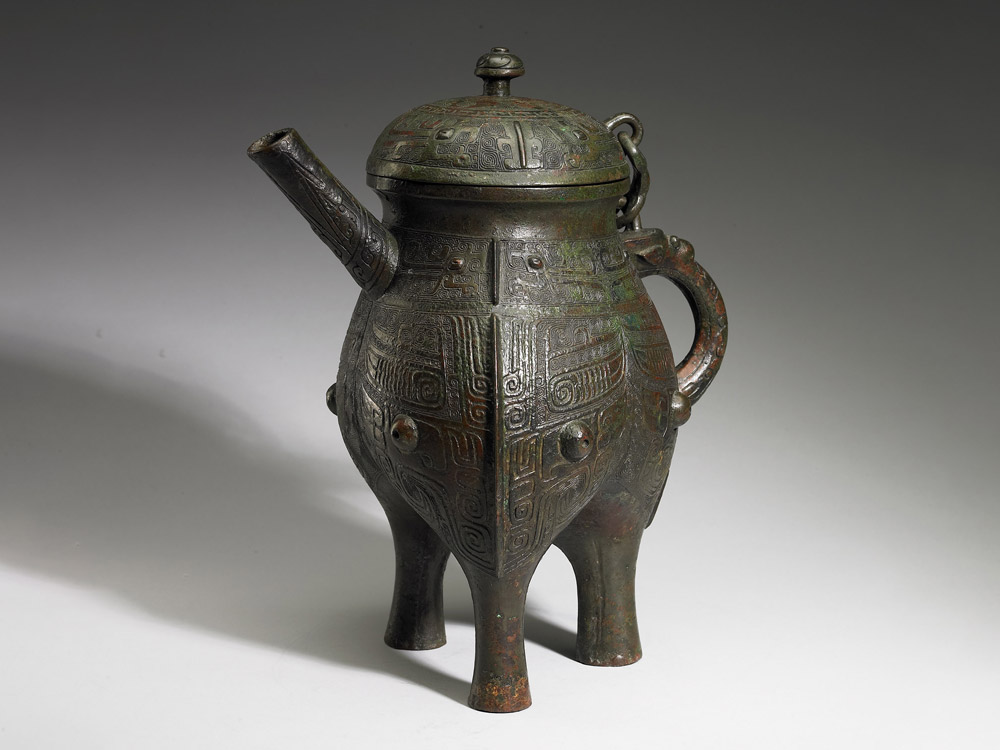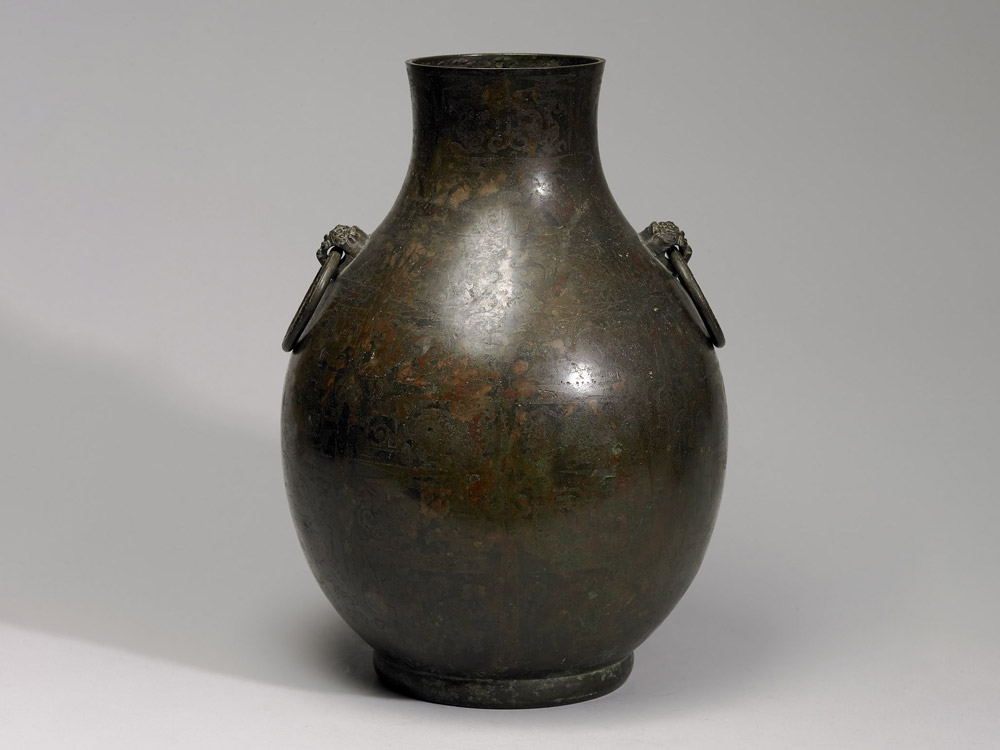Careful Delineation and Modelling
The Classification and Documentation of Bronzes
The manufacture and use of bronzes were prevalent during the Shang and the Zhou dynasties. The collecting, cataloguing, and studying of them, however, emerged in Song China. Means to document a bronze object include taking measurements, record the inscription with tracing copies or rubbings, and delineating the shape. To know a vessel begins with matching its specific name to the shape. The Song catalogues, for instance, were arranged typologically to serve their illustration purpose.
In Qianlong's Illustrated Catalogue of the Xiqing Antiquities (Xiqing Gujian, d.1755), bronze vessel types in name have been expanded to seventy, providing archaic references for other mediums to adapt. Drawing on prior scholarship, exhibits are organized typologically here to show how individual vessel form varies chronologically and geographically.
Every type of bronze vessels has its own name, and it will change according to the different understandings of the bronze. Take gui vessels as an example, it was named "dui" or "yi" from the Song to Qing dynasty. After the epigraphists identified the word "  " from the inscription as "gui" in the literature, and distinguish it from "yi" in the Jiaqing period (1796-1820), the name of this bronze type was finally confirmed.
" from the inscription as "gui" in the literature, and distinguish it from "yi" in the Jiaqing period (1796-1820), the name of this bronze type was finally confirmed.
The yi vessels entered the bronze repertory during the late Western Zhou period, replacing the he vessels as water ewers and were often used in conjunction with the pan basin. The animal-shaped lid, was probably adapted from the gong vessels. The intertwined developments of the two types, one succeeding another, resulted in their confusion in later bronze catalogues from the Song to the Qing periods.
Inlaid with copper, the vessel is decorated with seven layers of patterns from the mouth to the bottom of the belly, across which a motif of double triangles serves as further division, forming an overall grid pattern. From top to bottom, there are two layers of phoenix patterns, four layers of unicorn patterns, and the lowest layer is realistic deer patterns.
Following the example of bronzes was the way that Emperor Qianlong advocated in order not to be conventional. The forms they mainly copy from were ding, zun and hu. The materials include jade, bamboo carving, and cloisonné enamel.











